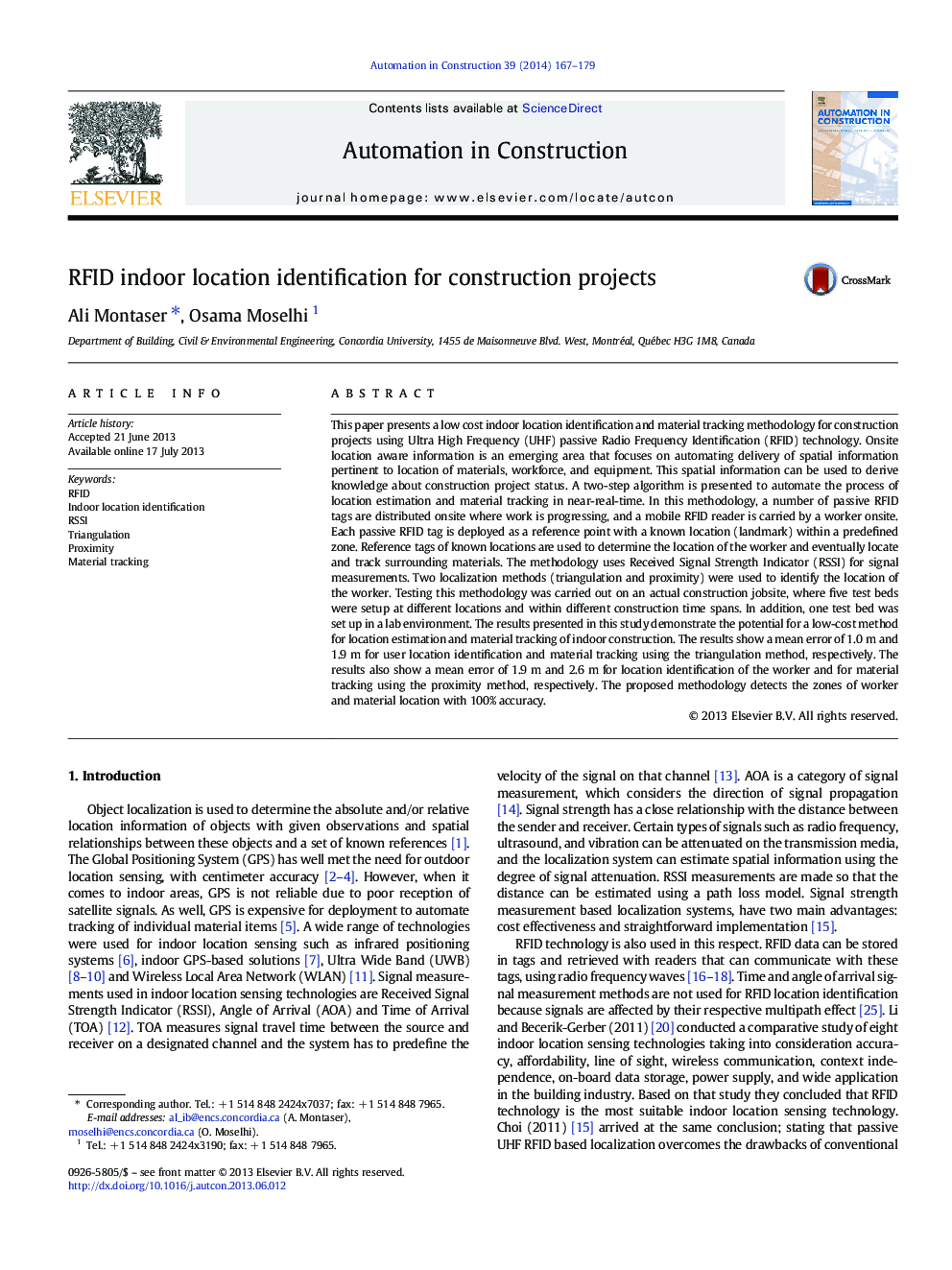| کد مقاله | کد نشریه | سال انتشار | مقاله انگلیسی | نسخه تمام متن |
|---|---|---|---|---|
| 246565 | 502379 | 2014 | 13 صفحه PDF | دانلود رایگان |

This paper presents a low cost indoor location identification and material tracking methodology for construction projects using Ultra High Frequency (UHF) passive Radio Frequency Identification (RFID) technology. Onsite location aware information is an emerging area that focuses on automating delivery of spatial information pertinent to location of materials, workforce, and equipment. This spatial information can be used to derive knowledge about construction project status. A two-step algorithm is presented to automate the process of location estimation and material tracking in near-real-time. In this methodology, a number of passive RFID tags are distributed onsite where work is progressing, and a mobile RFID reader is carried by a worker onsite. Each passive RFID tag is deployed as a reference point with a known location (landmark) within a predefined zone. Reference tags of known locations are used to determine the location of the worker and eventually locate and track surrounding materials. The methodology uses Received Signal Strength Indicator (RSSI) for signal measurements. Two localization methods (triangulation and proximity) were used to identify the location of the worker. Testing this methodology was carried out on an actual construction jobsite, where five test beds were setup at different locations and within different construction time spans. In addition, one test bed was set up in a lab environment. The results presented in this study demonstrate the potential for a low-cost method for location estimation and material tracking of indoor construction. The results show a mean error of 1.0 m and 1.9 m for user location identification and material tracking using the triangulation method, respectively. The results also show a mean error of 1.9 m and 2.6 m for location identification of the worker and for material tracking using the proximity method, respectively. The proposed methodology detects the zones of worker and material location with 100% accuracy.
Journal: Automation in Construction - Volume 39, 1 April 2014, Pages 167–179